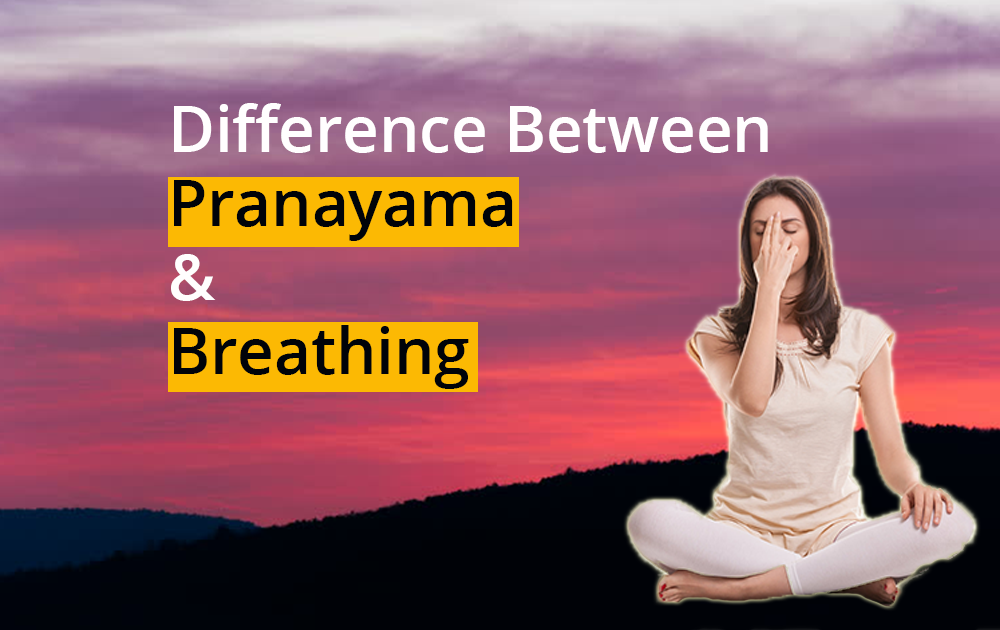Pranayama and Breathing
I agree everybody knows how to breathe, even a newborn child. Still, these days most of us need a breathing the program that can help us in dealing with our day-to-day desk work, driving, tension, anxiety and even depression. It is well known that deep breathing exercises can help overcome these stresses in life, so it is necessary for all of us to understand the science of breathing i.e. Pranayama.
“When the breath wanders, the mind is unsteady, But when the breath is still, so is the mind still.” Hatha Yoga Pradipika. Pranayama is a part of yoga system that teaches us the art of extending and controlling our breath in many ways. It teaches us to change the depth, rate, and pattern of breathing.
Also Read: Yoga Mojo Going Viral – Meditation in India
Difference between Pranayama and Breathing
Pranayama is the conscious awareness of breath. The term is derived from Sanskrit, Prana means breath, respiration, vitality or energy. Ayama means expansion or stretching. Thus, Pranayama connotes extension and control of breath. Proper rhythmic, slow and deep breathing, strengthens the respiratory system, soothes the nervous system and increases concentration. According to Yoga, the breath connects the Body, Mind, and Spirit.
The rate of breathing changes with circumstances such as it increases due to emotional or physical disturbances whereas, it automatically slows down when one is calm and peaceful. Like, when we get tired while climbing stairs, we get breathless. Try the following to regulate your breathing and feel less exhausted. Climb keeping shoulders straight and take a deep breath in for two stairs (inhale), and exhale for two steps, with a rhythm of two in and two out. Like this, we expel more carbon dioxide and take in great supply of oxygen, thus we feel less fatigue.
Mostly we use only a fraction of our lung capacity as we do shallow breathing. We barely expand the ribcage, shoulders are often hunched and have painful tension in the upper part of back and neck due to which we suffer lack of oxygen which makes us breathless and tired. So, keep both shoulder blades as close as possible without strain and exhale gently and fully pause, then inhale with a deep, slow, gentle breath until the lungs are comfortably filled. Then breath out slowly through the nose, without changing the position of shoulder blades. Repeat this cycle many times. By doing this, the brain gets stimulated and ease nerve tension by providing the fuller supply of oxygen.
Types of Breathing
Clavicular Breathing (Sectional Breathing): It is shallow breathing in which the abdomen is completely controlled, and breathing is performed by forcing the air into the uppermost region of the lungs. The shoulders and collar bones are raised while the abdomen is contracted during inhalation.
Thoracic (Chest Breathing): Breathing takes place by expanding and contracting the chest only, while the abdomen is kept under control. The middle lobes of the lungs are fully activated through this breathing.
Abdominal Breathing: Deep abdominal breathing brings air to the lowest and largest part of lungs. Breathing is slow and deep such that diaphragm is used properly.
A full yogic breath combines all three, beginning with abdomen and continuing the inhalation through the thoracic and clavicular area. The abdomen should expand outward on inhalation and contract on exhalation. To get the feeling of this motion, while sitting in any meditative posture preferably Vajrasana, place the hands on the abdomen close to each other. Exhale slowly inhale through the nostrils taking the hands away from each other so that the abdomen bulges. Hold the breath for a second. Then slowly exhale so that the abdomen retracts bringing the hands closer. Hold the breath for a second. Repeat the breathing cycle five times, preferably in the ratio 4:2:8:2. Breathing should be deep, slow and rhythmic.
The lower sections of the lungs increase with air flow. Rhythmic movement of the diaphragm massages the abdomen gently and enables the organs to function effectively.
Types and Benefits of Pranayama
Pranayama is practiced in a specific posture, especially sitting in Padmasana or Ardhpadmasana and should be performed early morning on empty stomach at a well ventilated quite place. Breathing should be slow and rhythmic, eyes should be close to control the mind and body. It has three aspects (1) Poorka (Inhalation) (2) Kumbhaka (Retention) (3) Rechaka (Exhalation).
Types of Pranayama:
• Ujjayi Pranayama (victorious breath)
• Anulom Vilom (alternate breathing)
• Brahamari Pranayama (humming bee breath)
• Bhastrika Pranayama (air is forcibly in and out)
• Shitali Pranayama (Cooling breath)
• Bahya Pranayama (forcibly breath in, breath out and then hold the breath)
• Kapalabhati Pranayama (exhales air from lungs is forcibly but inhalate involuntary)
Benefits of Pranayama
Pranayama purifies the psychic channels (nadis) and enables physical and mental stability. Pranayama is known to purify about 72,000 nadis or channels in the body. It helps to purify the blood and respiratory system. Deep breathing enriches the blood with oxygen. Large amounts of oxygen reach the brain, lungs, heart, and capillaries.
Pranayama techniques are beneficial in treating a range of stress-related disorders:
• Improves the autonomic functions
• Helps relieve the symptoms of asthma
• Aids in reducing unnecessary thoughts which helps in calming down the overactive mind thus reduces anxiety and depression
• Causes change in the cardiorespiratory system and help in lowering the blood pressure
• Improves physical fitness by practicing certain asanas of yoga, it is excellent for weight loss also
• Deep breathing i.e. bringing focus on the breath can be extremely relaxing and rejuvenating. Regular practice improves concentration, memory and overall state of mind.
Precautions
Pranayama should be practiced with care and it is better to do under the guidance of trained yoga teacher, as certain Pranayama is not advisable to be performed by people having certain ailments.


